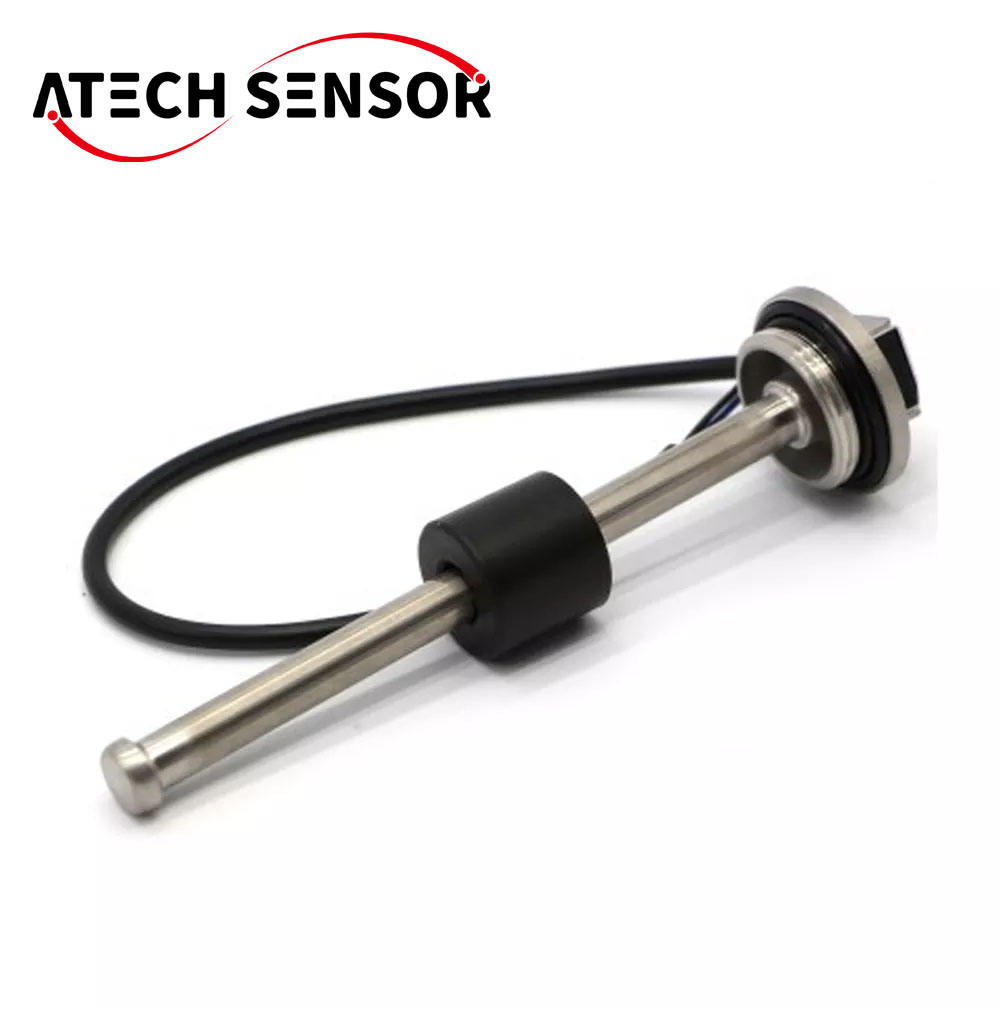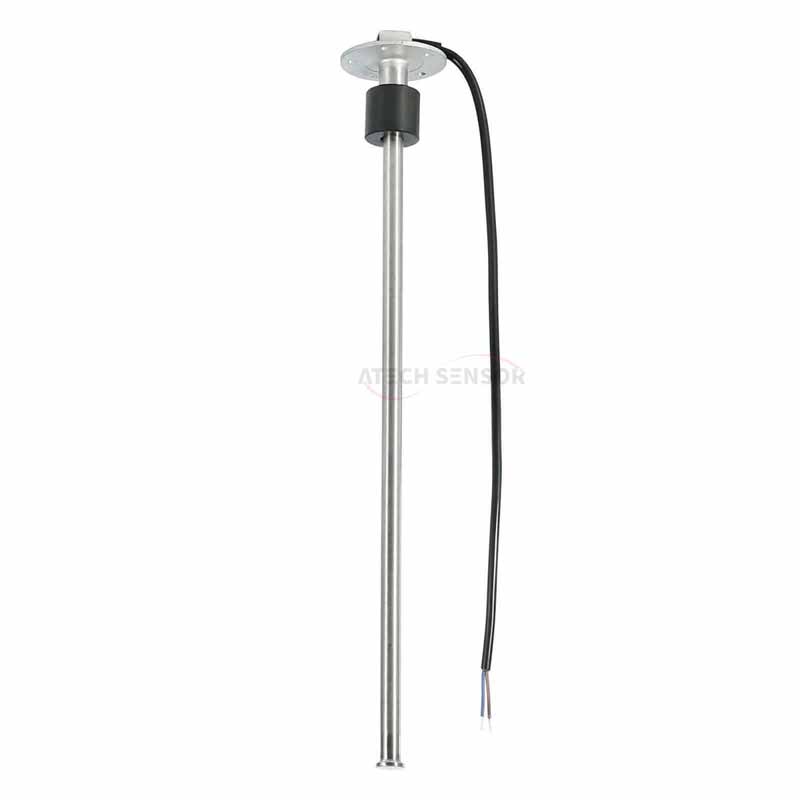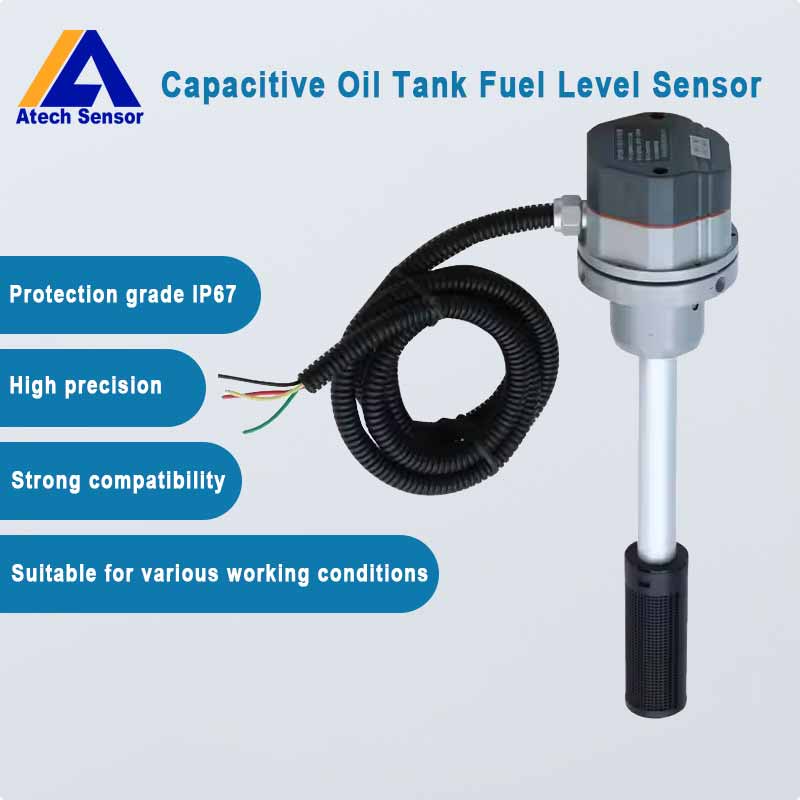Overview-What Are Fuel Level Sensors?
Fuel level sensors, along with IoT tracking & monitoring solutions, help extract information such as:
• Fuel level in the tank• Fuel consumption over time
• Fuel refill/drain status
• Identify fuel theft/pilferage
• Check vehicles/asset idling time

How Fuel Level Sensors Work?
The platform further analyses the information received and sends the information in visual format to the user, notifying him/her about the changes in fuel level in the tank which can be visualized from his laptop or mobile in visual forms.
Technology behind Level Sensing
Applications of Fuel Level Sensors
• Generator tank monitoring
• Mining equipment tank monitoring
• Fuel tank monitoring
• Oil tank monitoring
• Diesel tank monitoring
• Bus tank monitoring
• Sea vessel tank monitoring
Types of Fuel Sensors
1. Resistive/Float Fuel Sensor
These types of fuel sensors are factory-installed in the fuel tank as standard. The sensor is connected to a float that moves up and down depending on the fuel level. As the float moves up and down, the resistance of the sensor changes, resulting in the change of output resistance and position of needle in the gauge and the resistance output and the position of the needle change in proportion to the current flowing through the coil.
Advantage of Float Level Sensor
• Easy installation, Low Cost, Zero Maintenance.Disadvantages of Float Level Sensor
• Accuracy level of the sensor is very low (80-85%).• The installation position is limited by the shape of the container.
• Wear & tear of the sensor due to the sliding contact inside the sensor elements that also reduces the sensor lifetime.

2. Capacitive Fuel Sensor
Capacitive level sensors are used for point level detection and continuous level measurement. Capacitive fuel level sensor refers to the capacitive liquid level sensor used to measure oil levels. As the height of electrode is fixed. The fuel level between the electrodes changes resulting in dielectric change which in turn results in change of capacitance. The change in oil level is converted into change in capacitance value.
Advantage of Capacitive Fuel Sensor: Following are the advantages of Capacitive sensor:
• They offer high accuracy, durability, and reliability.• No moving parts involved so chance of wear & tear reduces.
• It can detect dense targets and liquids.
• Higher sensitivity and has very good resolution.
• They are resistant to turbulence.
Disadvantages of Capacitive Fuel Sensor
• It is very much sensitive to changes in environmental conditions such as temperature, humidity etc. This will affect the performance.• The measurement of capacitance is hard compared to measurement of resistance.
• Capacitive proximity sensor is not so accurate compare to inductive sensor type.
• The installation process is very tough.

3. Ultrasonic Fuel Sensor
Ultrasonic level sensor measures the liquid level based on the principle of ultrasonic waves. These are used for continuous non-contact level measurements. The ultrasonic pulse is emitted from a sensor (transducer), the sound wave is reflected at the liquid surface and then received by the same sensor or ultrasonic receiver. The fuel/ liquid level is determined by computing the distance between the sensor and liquid surface. The distance is calculated based upon the time time between the transmission and reception of the sound wave.
Advantage of Ultrasonic Level Sensors: Following are the advantages of ultrasonic liquid level sensors.
• Easy to install and maintain, reading is convenient, the structure is simple.• The measurement is stable and reliable with high precision.
• It is not easily affected by the viscosity and density of the liquid.
• High resolution, high accuracy, no maintenance because no moving parts involved, no contact sensor.
Disadvantages of Ultrasonic Level Sensors: The ultrasonic sensors have their own limitations and defects.
• There is a blind spot in the ultrasonic liquid level measurement. During the transmission of ultrasonic pulses, a small area near the ultrasonic transducer usually cannot receive sound waves.• Ultrasonic liquid level measurement is easily affected by temperature and humidity. The change of temperature will cause the change of sound speed, leading to errors in the measurement.
• Ultrasonic liquid level gauge is greatly affected by dust.
4. Pressure Sensor
The most common type of pressure sensors used for fuel level measurements is hydrostatic type sensor. A hydrostatic pressure sensor senses the liquid’s head pressure. The amount of pressure depends upon the weight of the liquid above the sensor, which, on its turn, depends upon the volume of liquid in the tank.
These types of sensors provide an accuracy of ~95%Advantage of Pressure Sensors: Following are the advantages of ultrasonic liquid level sensors.
• These sensors are not affected by vapours or other environmental obstacles.• They are cost-effective and easy to install.
Disadvantages of Ultrasonic Level Sensors:
• These sensors provide inaccurate reading if the density of the liquid is not uniform.5. Fuel Flow Meter
This is used to measure the volumetric fuel consumption. It connects to the fuel line between the tank and the engine. The flow meters used for fuel consumption measurement are primarily of differential type flow meters. It has two measuring chambers – one for the supply fuel line and the other for the return fuel line. It measures volumetric fuel consumption by computing the difference between the consumption in supply and return line.
Advantages:
• High Precision• Their accuracy is not affected by moisture and temperature.
• Transmits the fuel consumption directly unlike fuel level sensors where the consumption needs to be calculated based upon the fuel level.
Disadvantages:
• The meter requires periodic maintenance because the moving parts of the meter leads to the wear and tear of the parts.• The installation of these meters is difficult as modifications in the fuel line are required for the same.
• The dirt filter needs to be checked and changed/ cleaned periodically.
• Costlier when compared to fuel level sensors.
• Can’t be used for measuring the fuel level in the tank.

